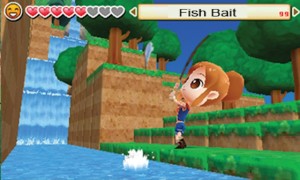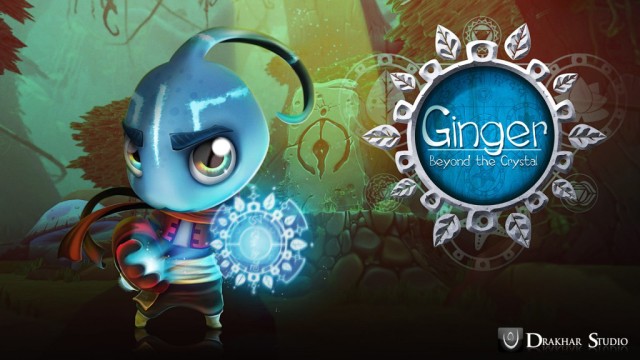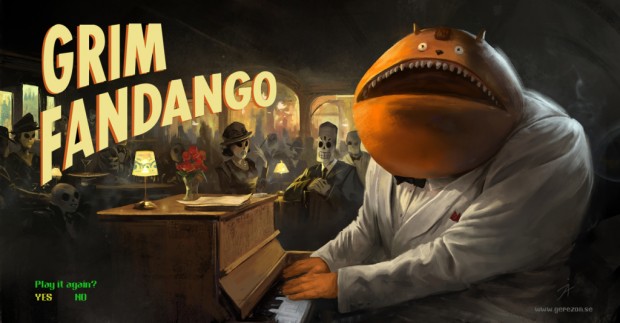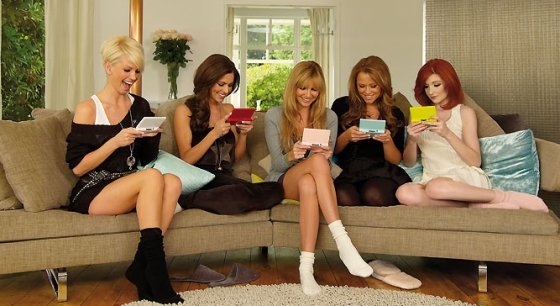One of the earliest farming simulation games, the Harvest Moon series tasks you with running and growing a farm and all the various tasks that entails. In addition to growing crops and raising animals, you also can collect wild plants, fish, dig for valuable items and minerals, and the like. The gameplay of most of these titles share a simplistic and straightforward core, with variation from game to game largely being dependent on the literal environment, the characters you’re able to interact with, the bachelors/bachelorettes you’re able to woo and fall in love with, and a few additional gameplay elements here and there. More often than not the games are all very much alike, with very little change from one title to the next. While this might be seen as a negative strike against the series, I never really found myself knocking them for their similarity. Much like with Animal Crossing, I knew what I was getting myself into when I played each new iteration: a cute, quaint, simple but supremely addictive experience and another return to the ordinary but slightly magical world of Harvest Moon. So when I booted up Harvest Moon: The Lost Valley for the first time and saw the game I’d become so accustomed to completely renovated and fundamentally different, I was more than a little shocked and disappointed.
The premise of Harvest Moon: The Lost Valley is familiar. You, a young man or woman are new to the area and are tasked with maintaining and re-establishing a farm. In this particular title you find yourself climbing up a mountain during a seemingly never ending blizzard. Cold and tired, you encounter an odd Sprite who advises you to take a rest in a conveniently placed cabin. The next morning the Sprite informs you that the Harvest Goddess lost her power and was tragically sealed away. In her absence an eternal winter has overtaken the area. The Sprite offers you seeds, farming advise, and urges you to save the Harvest Goddess. Then he quite literally sends you on your way.
 The first noticeable aspect that differentiates this edition from any that I’ve played before is simply the design and art style. The character design is smooth and charming, but it feels incredibly out of place in the now blocky world that is the Lost Valley. I had heard rumors that this particular edition was following in the footsteps of Minecraft but I had never imagined it was to be so literal. Instead of a fluid and semi-realistic land, your farm is now composed of the same blocky design that makes up Minecraft. I suppose this was intentionally done so as to facilitate the new feature for this title: complete farm customization. You can now alter the very land your farm resides on. Adjusting terrain levels, adding bodies of water, and planting trees is now on your to-do list alongside growing crops and raising animals. Although I could see how some might like this, I actually found it incredibly tedious. I spent multiple hours trying to flatten the terrain – partially to make it habitable for crops and animals and partially because I hate being reminded of the ugly stacked blocks that make up the mountainous area. It’s very jarring to go from a rather realistic and fluid, albeit cutesy and chibi-ified, aesthetic to something so rough and square.
The first noticeable aspect that differentiates this edition from any that I’ve played before is simply the design and art style. The character design is smooth and charming, but it feels incredibly out of place in the now blocky world that is the Lost Valley. I had heard rumors that this particular edition was following in the footsteps of Minecraft but I had never imagined it was to be so literal. Instead of a fluid and semi-realistic land, your farm is now composed of the same blocky design that makes up Minecraft. I suppose this was intentionally done so as to facilitate the new feature for this title: complete farm customization. You can now alter the very land your farm resides on. Adjusting terrain levels, adding bodies of water, and planting trees is now on your to-do list alongside growing crops and raising animals. Although I could see how some might like this, I actually found it incredibly tedious. I spent multiple hours trying to flatten the terrain – partially to make it habitable for crops and animals and partially because I hate being reminded of the ugly stacked blocks that make up the mountainous area. It’s very jarring to go from a rather realistic and fluid, albeit cutesy and chibi-ified, aesthetic to something so rough and square.
What has truly left me disappointed is the complete removal of a town from the game. Part of what I found so endearing about Harvest Moon was what you could do outside of the farming, fishing, or mining. It was the sense of adventure involved with exploring your new land and meeting all the characters connected with it. It was the social aspect that made it feel communal and homely. In Harvest Moon: A Wonderful Life, for instance, I watched characters grow old, explored what gifts they liked to receive, and had to puzzle out the mystery of which villagers would potentially offer helpful items in exchange for friendship. Without the town, characters simply come to your farm from time to time. But when they do you cannot give gifts. Some offer the occasional “mission” for you to complete in exchange for some rewards. Because most of the visitors come also to sell you items or offer you services, they don’t have much to say, either. While the bachelor/bachelorette system is still in place, allowing you to get married (and with an equal amount of male and female suitors of appropriate ages and things to offer – unlike the last version I played – although no word if same-sex courtship is available), The Lost Valley feels lonely. There’s only so much watering plants I can do to pass the day.
Don’t get me wrong though – the game still has me sufficiently addicted. The UI is certainly smoother than in past games. For instance, rather than having to choose your hoe or shovel from your inventory before use, when you stand on a piece of land the game now provides you multiple options depending on what tools you have in your inventory. I’m still only in the first season and I plan on continuing to play to see if the game gets any more lively with a few more characters and animals. But unless you enjoy this style of game solely for the customization options, are a full-on farmer and generally avoid the townspeople, or are a fan of Minecraft’s formula, I would recommend picking up a past incarnation of the game and savoring the quaintness of it all rather than the somewhat bleakness of this edition.




